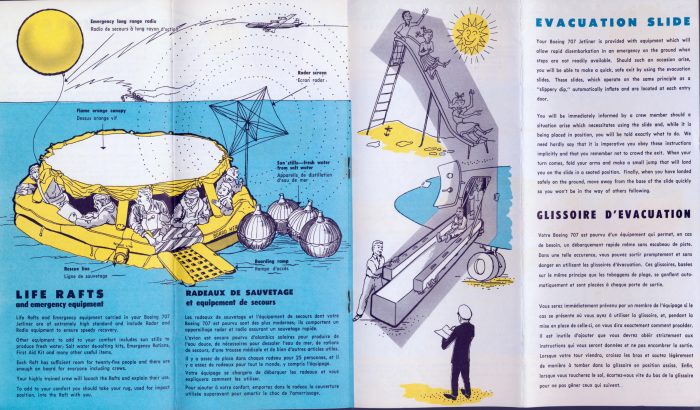
Furby! There was a time when mobile phones had antennas. And TINY screens. And couldn’t take selfies. We know right.

Jolene was surprised to see that the emergency masks were the same lemon colour as her dress.
For us at Qantas, your safety is our number one priority.
That’s why we’re making safety videos that are both fun to watch and informative, blending important information with some of the country’s most spectacular destinations. Check out our latest video here or at the bottom of this post.
As aircraft technology has evolved since the early days of flights, we got to thinking about how we communicate safety has changed as well.
Safety cards in the early days of aviation read more like short novels. Huge amounts of text explained in detail what to expect in the event of a water landing.
Perhaps it was a way to reassure passengers in the 1950s who weren’t used to flying long distances across the ocean. Or at least it gave them something to do on journeys in an age before in-flight entertainment.
Ladies were asked to remove jewellery and men told to loosen ties and collars before exiting into the rubber life raft.
Pictures showed happy families fishing from the life raft while mermaids flirted from the water below.
As more and more people began to fly, safety cards gradually transformed into the ones you know today.
Universal symbols now make it possible for passengers, whether they’re from Tamworth or Timbuktu, to know what they need to do in an emergency.
We had a look through our archives and we’re just going to leave a few of older examples here.

Instructions written in French brought a hint of sophistication to the explanation of a water ditching.

This safety card from the Lockheed Super Constellation reflected the more glamorous times in aviation where gentleman were asked to remove their ties and neck collars and ladies to leave jewellery behind before entering the life raft. They were also reminded to take out their false teeth.

Mermaids, fishing and relaxing in a rubber dinghy while smoking a pipe. How we explained a water landing back in the 1950s.